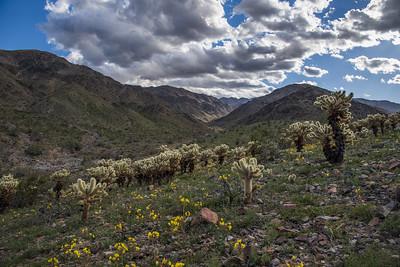BLM approves project to provide permanent, dependable water source for wildlife in Riverside County
Organization:
Media Contact:
PALM SPRINGS, Calif. – The Bureau of Land Management (BLM) has authorized the replacement of an existing big game water guzzler to increase water sources for wildlife in response to increased and prolonged drought. The project will take place in the BLM-managed Chuckwalla Mountains Wilderness and Area of Critical Environmental Concern in Riverside County.
During December, the California Department of Fish and Wildlife, in partnership with The Society for Conservation of Bighorn Sheep, will use a helicopter to deliver three new 2,300-gallon water tanks. Volunteers from The Society for Conservation of Bighorn Sheep will install and build the tanks in the same footprint as the previous system.
The replacement of the big game water guzzler provides an artificial water source where desert bighorn sheep and other animal species have relied on water for more than 45 years. Hotter temperatures and extreme weather events make this project critical for wildlife.
As part of the 1994 California Desert Protection Act, the BLM continues to assist the California Department of Fish and Wildlife in the management of desert bighorn sheep, a BLM sensitive species, in the designated wilderness area. The guzzlers, originally installed in 1974, were destroyed by flood damage.
The BLM addressed potential impacts of the big game water guzzler installation project in the environmental assessment developed under the National Environmental Policy Act. To review the environmental assessment, decision, and other documents, visit https://bit.ly/3BaXgbq.
The BLM manages about 245 million acres of public land located primarily in 12 western states, including Alaska, on behalf of the American people. The BLM also administers 700 million acres of sub-surface mineral estate throughout the nation. Our mission is to sustain the health, diversity, and productivity of America’s public lands for the use and enjoyment of present and future generations.

